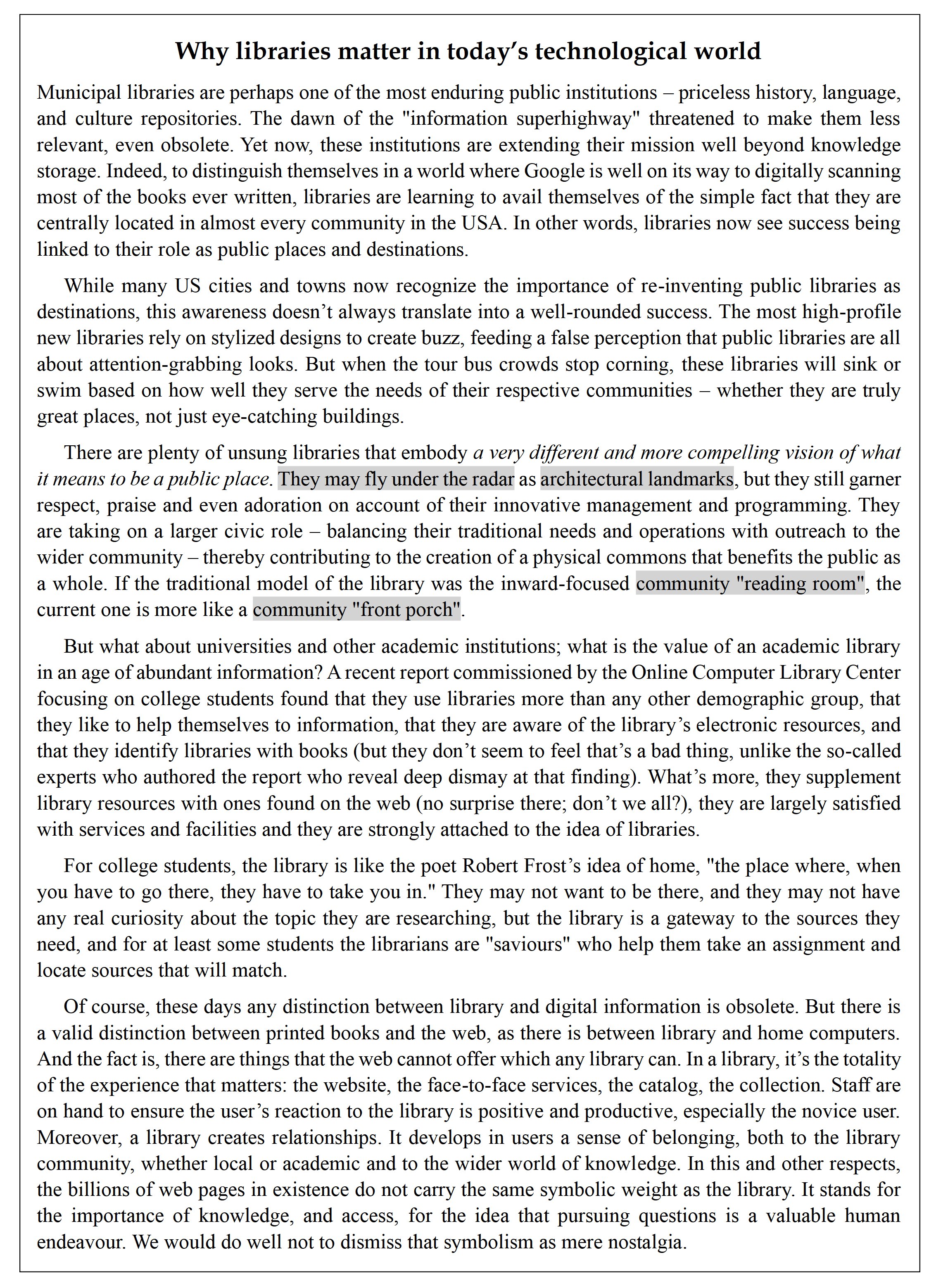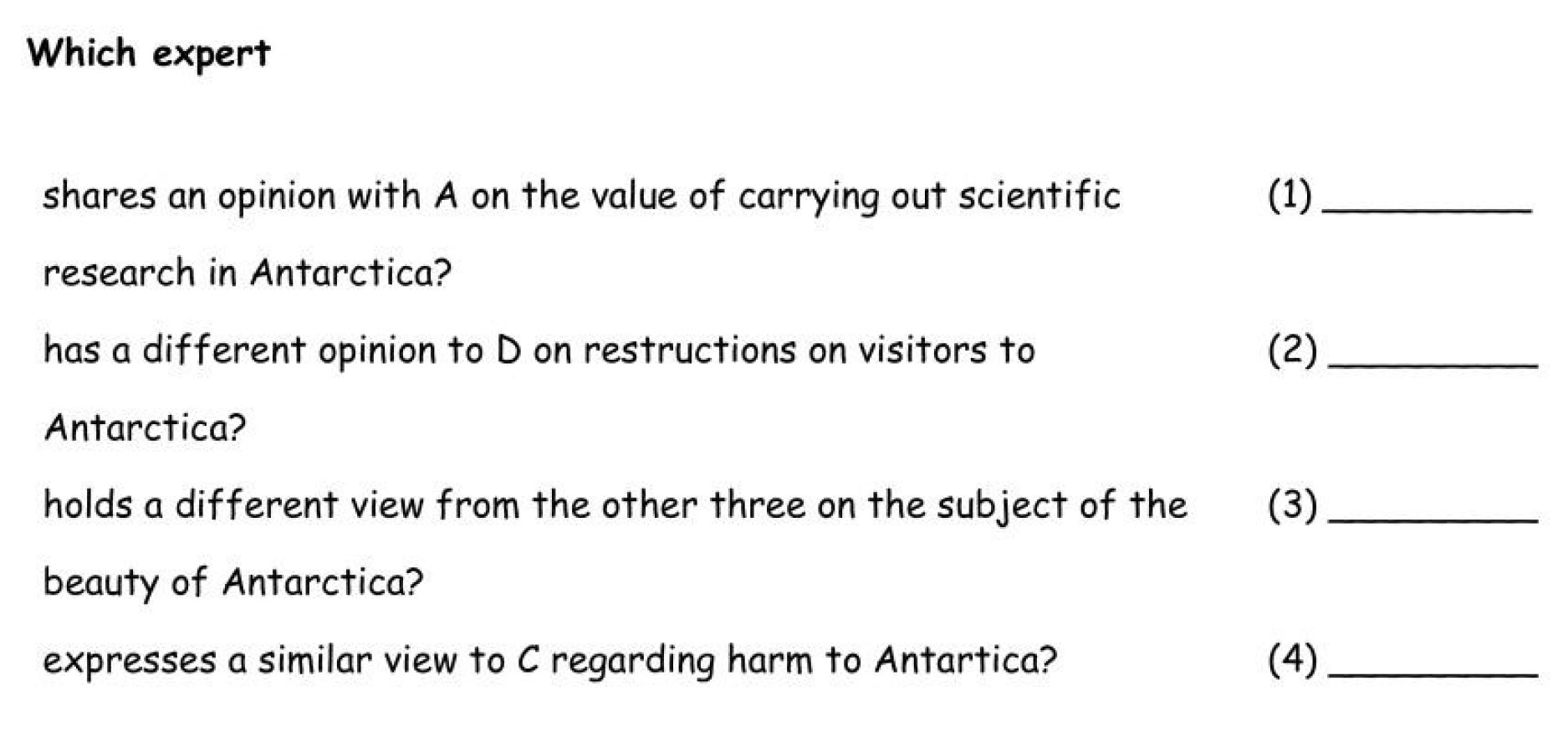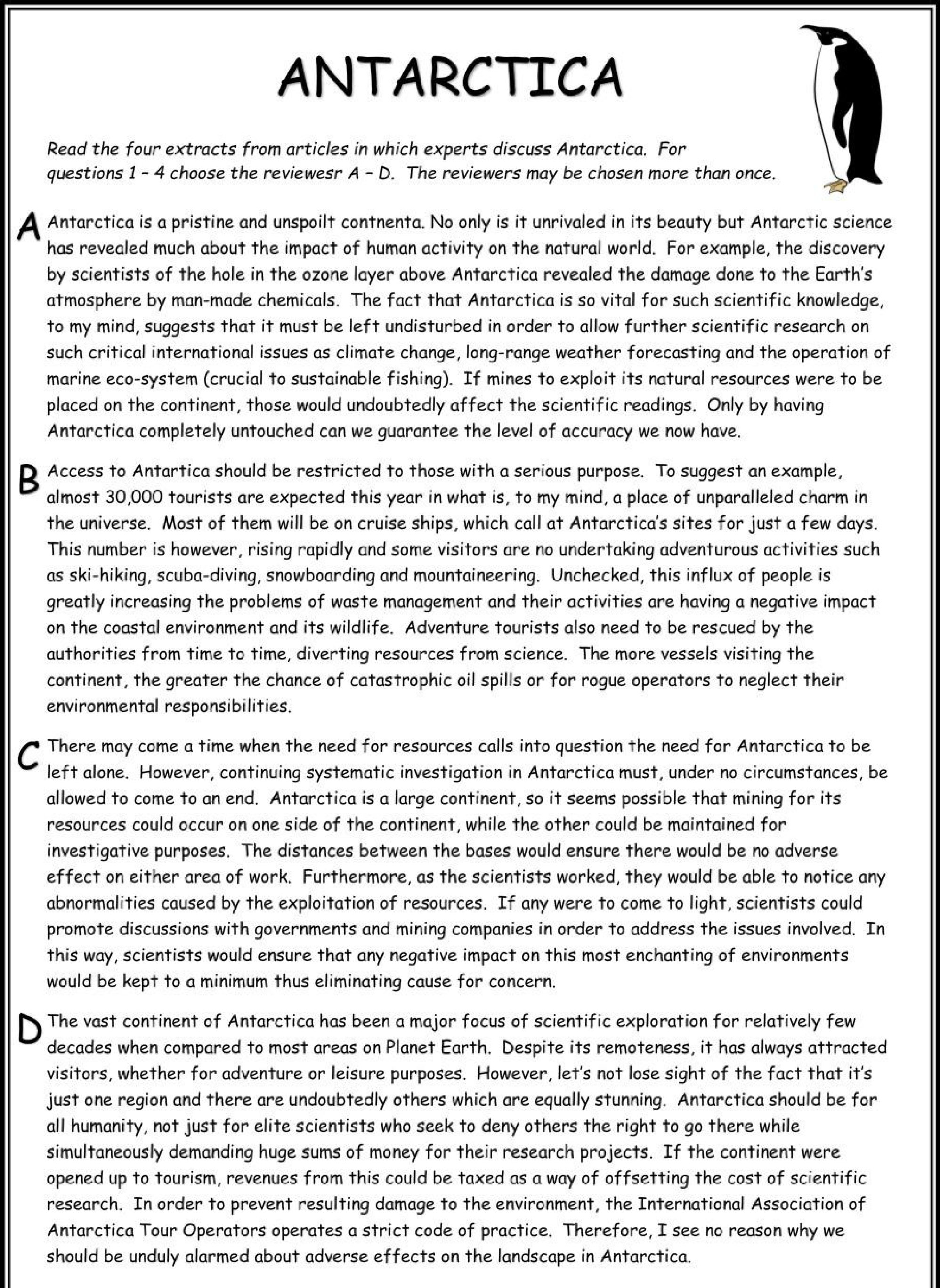Read a magazine article about an intellectual process known as critical thinking. For questions 1 – 6, choose the answer (A, B, C, or D) which you think fits best according to the text.
Critical Thinking
We examine whether people are still able to engage in critical thinking in modern day society
Critical, or analytical, thinking is a way of interacting with what we read or listen to in attempt to have a deeper understanding. “There is a belief that argument is a way of finding the truth,” observes Adrian West, research director at the Edward de Bono Foundation U.K.
Although there’s little debate that information technology complements – and often enhances – the human mind in the quest to store information and process an ever-growing tangle of bits and bytes, there’s increasing concern that the same technology is changing the way we approach complex problems, and making it more difficult to really think. “We’re exposed to greater amounts of poor yet charismatic thinking, the fads of intellectual fashion, opinion, and mere assertion,” says West. “The wealth of communications and information can easily overwhelm our reasoning abilities.” What’s more, it’s ironic that ever-growing piles of data and information do not equate to greater knowledge and better decision-making. What’s remarkable, West says, is just “how little this has affected the quality of our thinking.”
According to the National Endowment for the Arts, literary reading, for one thing, declined 10 percentage points from 1982 to 2002, and the rate of decline is accelerating. Many, including Patricia Greenfield, a professor of psychology, believe that a greater focus on visual media comes at a price. “A drop-off in reading has possibly contributed to a decline in critical thinking,” she says. “There is a greater emphasis on real-time media and multi-tasking rather than focusing on a single thing.” Nevertheless, a definitive answer about how technology affects critical thinking is not yet available. Instead, due to the ever greater presence of technology, critical thinking has landed in a mushy swamp and academics can no longer rely on fundamental beliefs that they previously held.
While it’s tempting to view computers, video games, and the internet in a largely good or bad way, the reality is that they may be both, with different technologies, systems and uses yielding entirely different results. For example, a video game may promote critical thinking or detract from it. Reading on the internet may ratchet up one’s ability to analyze while chasing an endless array of hyperlinks may inhibit deeper thought.
“Exposure to technology fundamentally changes the way people think,” says Greenfield. As visual media have exploded, noticeable changes have resulted. “Reading enhances thinking and engages the imagination in a way that visual media do not,” Greenfield explains. “It develops imagination, induction, reflection, and critical thinking, and vocabulary.” However, she has found that visual media actually improve some types of information processing. Unfortunately, “most visual media are real-time and do not allow time for reflection, analysis, or imagination,” she says. The upshot? Many people – particularly those who are younger – wind up not making the most of their capabilities.
How society views technology has a great deal to do with how it forms perceptions about critical thinking. And nowhere is the conflict more apparent than at the intersection of video games and cognition. James Paul Gee, a professor of educational psychology, points out that things aren’t always as they appear. “There is a strong undercurrent of opinion that video games aren’t healthy for kids,” he says. “The reality is that they are not only a major form of entertainment, they often provide a very good tool for learning.” In fact, jigsaw tactics can go a long way toward building smarter children with better reasoning skills. Games such as SimCity extend beyond rote memorization, and teach decision-making and analytical skills in immersive, virtual environments that resemble the real world. Moreover, these games give participants freedom to explore ideas and concepts that might otherwise be inaccessible.
Question 1: In the second paragraph, it is said that information technology
A. does not help us to manage large amounts of data.
B. does not enable us to make better judgments.
C. does not improve our ability to remember details.
D. does not allow us to find solutions to problems faster.
Question 2: What does Patricia Greenfield say about the decline of literary reading?
A. It is the result of the popularity of the moving image.
B. It is unrelated to people’s ability to multi-task.
C. It has led to an increased awareness of critical thinking.
D. It has been caused by the growing tendency to read online.
Question 3: The writer uses the term ‘mushy swamp’ to convey a sense of
A. clarity.
B. reality.
C. diversity.
D. ambiguity.
Question 4: In the fourth paragraph, what point does the writer make about hyperlinks in internet texts?
A. They prevent the reader from considering other points of view.
B. They diminish the reader’s experience of engaging with the material.
C. They offer the reader an opportunity to explore subjects in greater depth.
D. They make life easier for the reader by offering instant access to information.
Question 5: Based on her research into learning and technology, Greenfield believes that visual media
A. might actually develop people’s creativity in new ways.
B. have contributed significantly to linguistic change.
C. may prevent certain users from fulfilling their potential.
D. can detract from people’s ability to relate to each other.
Question 6: In the sixth paragraph, the writer reports the view that, for young people, playing video games
A. is a means of escape from the pressures of everyday life.
B. is a highly suitable medium for intellectual development.
C. teaches effective ways of solving conflict.
D. allows enjoyment of a safe form of entertainment.






